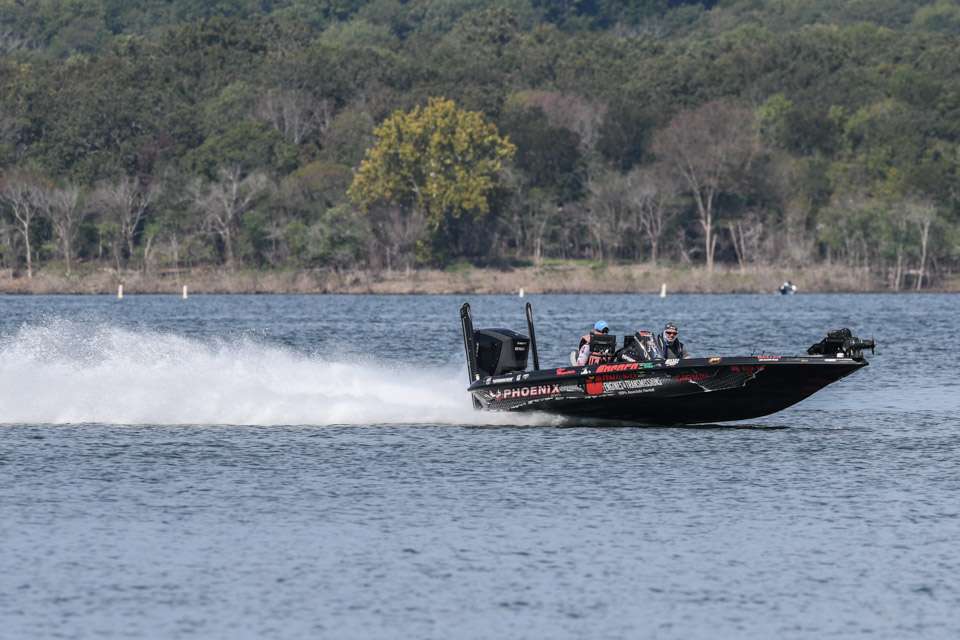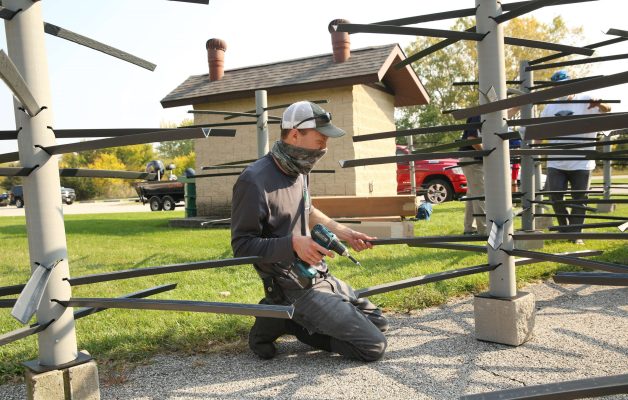
As an Elite Series pro, I’m often in a rush. We sometimes have back-to-back tournaments, or after a long stint on the road I just want to get home and see my wife, but it frequently seems that there’s little time to spend on routine maintenance. Weekend anglers experience the same thing – you work hard all week, wolf down dinner and go to bed on Friday night, get up early Saturday, fish two days, cover up the boat and start the process all over again.
Sometimes that gets us in trouble. Earlier in my career I was fishing both tours, and I left Beaver Lake after the final day of competition with the intention of driving all night to get to the next event. I took off driving with a relatively new boat, and 50 miles down the road I was flagged down by a passing car.
He told me that 25 miles back I’d lost a tire and wheel due to loose lugnuts. “It must’ve gone 150 feet down the highway into oncoming traffic,” he said. I was shocked and scared but fortunately he followed up by saying that no one had gotten hurt. He’d even marked the location in case I wanted to go back and get it, but I had places to go, so I put the spare on and headed down the road.
When I think about that now, I shudder. It could have been much worse – and it all could have been prevented if I’d just checked all of the lugnuts.
We are living in unusual and uncertain times due to the COVID-19 virus. Tournaments have been canceled; whole states have been put on virtual lockdown. It’s very confusing. At the same time, most of us have never had so much uninterrupted time at home to take care of chores like boat maintenance. Here are 10 things you can do to minimize the chances of danger or part failure the next time you’re on the water:
1) Check the bolts that secure your outboard to the transom or the jackplate. I guarantee you, just from trailering down the road they will work loose, and if you spend any time in rough water, that’s another factor to consider. Believe me, you don’t want a loose engine flailing around. I check them two to four times a year, and immediately after any rough water situation. You don’t need to be particularly mechanical or have special tools to do this. Usually you can use a couple of 3/4-inch wrenches or a wrench with a socket and ratchet.
2) While you’re back there, check the steering mechanism. This is another component that you don’t want to go out at speed. Is there any visible damage, any leaks or rough spots on the hydraulic lines? Replace them. Again, snug up those nuts and bolts so nothing comes loose unexpectedly.
3) Still at the back of the boat? Check your Power-Poles’ mounting bolts and brackets. Once again, time and vibration have a tendency to work everything loose, especially in the back of the boat.
4) Pop open your battery compartment and check the tie down straps and the trays holding your batteries in place. The last thing you need is a 70-pound projectile flying around in there in rough water. Sometimes the trays crack or the screws pull through, so a quick visual inspection may not be enough. Really get down in there and give a little tug to see if they move at all.
5) Your onboard charger is another potential casualty. If it’s coming loose, reattach it, firmly.
6) Now that you’re sure your batteries are secure, check the connections themselves. Are they clean? Is everything secure on the proper terminal? If not, get them in working order.
7) Moving down and outside the boat itself, heed my example and make sure that your lugnuts are tight on all two or four wheels, depending on your trailer style. I got lucky, but if your tire comes off you might not. Secure them with a torque wrench, and if your get really ambitious jack up the axle, and give your wheel a spin to check the bearings and brakes. If the rotor looks like someone took a grinder to them, they need some attention.
8) How’s your fire extinguisher? Have you checked it since you first got the boat? It needs to be a marine or ABC model, and check to make sure that it’s still good, not only the charge, but that it hasn’t expired. Yes, they expire, so check the dates. Also, consider its location. You don’t want it in the back of the boat near the engine or the fuel, where fires typically start. I like to store it near the driver’s seat or in a compartment near the front.
9) It’s also a good time to check your life preservers. During this homebound experience we’ve all been eating a lot, so make sure it still fits and is in good working condition. If you have an inflatable like those from Mustang Survival, check to make sure that the CO2 cartridge is still operational. There’s usually a light or level. Also, be aware that in a lot of states, inflatables only count toward the total number on our boat if they’re worn the entire time. If not, you have to have an additional Type III onboard. Even if you’re using the traditional Type III, make sure that the padding and floatation material is in good shape and not torn. Check that the zippers and buckles work as intended. A new PFD is a small price to pay for your safety. The requirements vary from state to state. I always carry an extra – you never know when you’re going to pick up an extra passenger.
10) Finally, take inventory of your safety equipment. Most states require you to have a throwable floatation device. I attach a rope to mine so that I can throw and retrieve it – trust me, you want to do this. You’ll also want flares. They expire after a period of time, so make sure you check the dates on them, which can be hard to read. An additional sounding device like an air horn or whistle is also typically required. I carry a heavy-duty rope that’s at least 100 feet, in case a tow is needed. An anchor and paddle are not only good ideas but they are required in certain states.
None of this is as sexy as buying a new rod and reel, or a bunch of new lures, but all of these steps are remarkably simple and can save you a lot of time, aggravation and money. Now’s the time to stay safe and spend time with your loved ones, but at some point we’ll be back to normal, and you don’t want to squander that opportunity by overlooking a simple fix.





